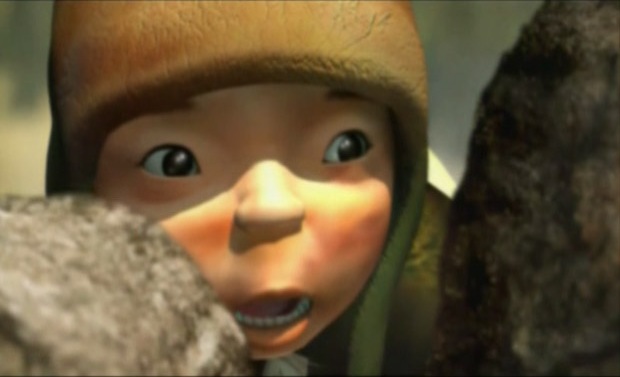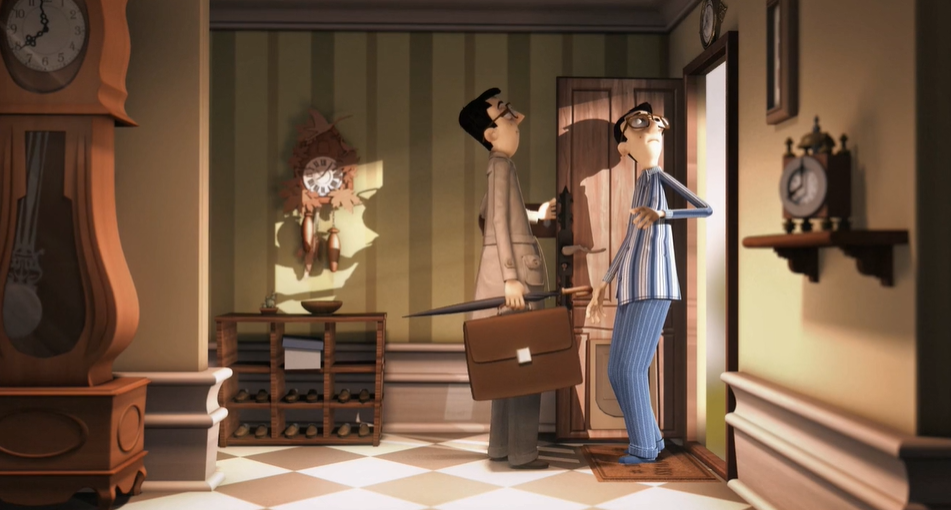Making a Film
Making a Film
Like any new skill, filmmaking can be a little intimidating at first - but also incredibly fun and rewarding! Our Making a Film with a Class resource guides novice filmmakers through teaching a class how to make a film, with suggested activities and approaches.
What do I need?
Many people think you need a huge amount of fancy equipment to make a film - this is not true! As long as you have a camera, editing software and some imagination then you can get filming. Also, while phones in a classroom can be a nightmare for teachers, it does mean that many young people now carry a fully functioning film studio in their pocket, and one that many of them already know how to use, so take advantage of this! If you would like a little more guidance, take a look at our curated list of recommended Filmmaking Resources.
Stages of making a film
Making a film can be a lot of fun but it is a major project so you want to be as organised as possible. There are four key stages to making a film - the 4Ps:
- Pre-production: coming up with an idea, writing and storyboarding it, then designing props, sets and costumes.
- Production: where you get the camera out and film the footage.
- Post-production: putting the pictures and sounds together in a program like iMovie or Final Cut.
- Presentation: once you've made your film, you want to show it off to everyone!
And remember the golden rule: An hour to film; a day to edit; a minute to watch!

Pre-production
Developing a project for the screen is not just about telling a good story (although that is vital). It's also about making it work as a screen story. Good ideas and strong narratives are the key to watchable films, so spend a bit of time getting the story sorted before you start filming. And don't lose sight of your original idea. Read our Film Stimulus page for advice in generating ideas, and here's some guidance to help you assess the potential of your idea and also direct you to what you need to develop, change or abandon.
(Remember that an idea may not initially match up with all the points listed. This doesn't mean the idea should be abandoned; it means you should think about what changes are needed for it to work. A common mistake is to try to force an idea into the wrong length or genre - now is the time no identify problems and resolve them.)
- What's the story about?
- Who is the main character? Who is the antagonist? What are the characters' stories? Who are the essential other characters? How many characters are there? Are they all needed?
- What problem needs to be dealt with? Why are these characters in conflict?
- Do the stories compliment each other? Do all the characters' stories come together to suggest some meaning or message?
- Are the characters' stories or the thematic subject achievable in a film? (This is the most difficult question to answer but also the crunch question. If it's a no, can you retain any elements, or is it back to the drawing board?)
- In which setting will the narrative take place? How many settings are there? Are they all needed?
- What is the film's structure? Is it linear, abstract or a combination of the two? What are the twists and surprises? How are you going to tell this story?
- What timespan will the events in the film have? How long will it take you to tell this story?
- What genre is it? What conventions of the genre are you using? What is original and what is familiar?
- What is the style of the narrative?
Production
Here are some tips for making the shooting stage as problem-free as possible:
- Test your equipment before you start.
- Sound is crucial - get the microphone as close as possible.
- Use a tripod – your shots will look so much better.
- Don't pan and zoom madly - it can confuse viewers.
- Compose shots to fully explain your narrative. Keep asking yourself: what is going on at this moment and how will I show it?
- If making an animation, fix everything down firmly: lights, camera, drawings, puppets. You don’t want anything to move when it shouldn’t!
Post-production
Editing is like writing with image and sound. Just like writing a script, you make draft after draft, refining your work until you think it is ready for viewing. You have to work with what you have in the footage, which may often mean changing the initial idea.
When editing, you have four things to work with:
- the images
- the sound
- your creativity
- the audience’s imagination
You’ll need a computer, mobile phone or tablet and some editing software like iMovie or Final Cut. For more editing software recommendations, see Filmmaking Resources.
Watch our tutorials on editing and continuity editing to understand these better. If you are using iMovie then this guide will help.
There are three golden rules in editing:
- Editing should remain invisible to the eye – only the effect is to be experienced. The best cut is the one you don’t see.
- The storyteller should never let the audience get ahead of them - less is more.
- Involve the viewer in the story – don’t let them just be a spectator.
Editing is usually a role taken on by an individual but it is possible to have two or more people editing at the same time - in fact this can become a rich context for focused teamwork and creativity. However, it's best if just one pupil at a time is operating the kit, then rotate within the group. If you need to have large numbers editing one film you may be able to split the film into scenes for each group to work on.
As editing is a brand-new skill to most young people, ensure everyone gets a turn - sometimes pupils have a natural visual eye and show a real talent for editing, so they should be encouraged. Don't let anyone lean over and operate their mouse for them, even if they're less IT-literate.
Presentation
The ‘film premiere’ is a great event where everybody can get together and watch the film. It's a lot of fun, as well as a useful opportunity to reassess the work. (A peer assessment sheet can be found within the Making a Film resource.) It also highlights the value of the project to the wider community. So try and get along any funders, sponsors, supporters, family and friends. You want to showcase the class’s work in a celebratory environment.
Cinemas are of course wonderful places to have the showing; if you play your cards right certain local cinemas will give you a good deal. But you can have a fantastic screening in the school hall, local community centre – in fact, practically anywhere. Just make sure you can black-out any windows and have a reasonable sound quality.
However, don't feel that every film your pupils make needs a special screening. Adopting filmmaking as a regular task, much as writing or reading, allows pupils to really gain confidence and skills and to learn through making mistakes without worrying everyone will see them.
Marking
If you are looking for a formal guide to marking a film, take a look at the BGE Fourth Level Film Studies checklists. The Filmmaking checklist should help you to develop your own.
A word about documentaries
These non-fiction films capture reality as it unfolds and that's why they are an exciting way to tell stories. The subjects in a documentary are real people so the answers aren't scripted beforehand, but this doesn't mean you don't have to prepare. It would be a mistake to go into a situation and wait for something interesting to happen. You must have an idea of what story you want to tell, which experiences you want to capture, who you want to interview and what point you want to make overall. So do you research and, just like trying to find a story and message in a scripted film, see if you can settle on the subject and theme of your documentary.
